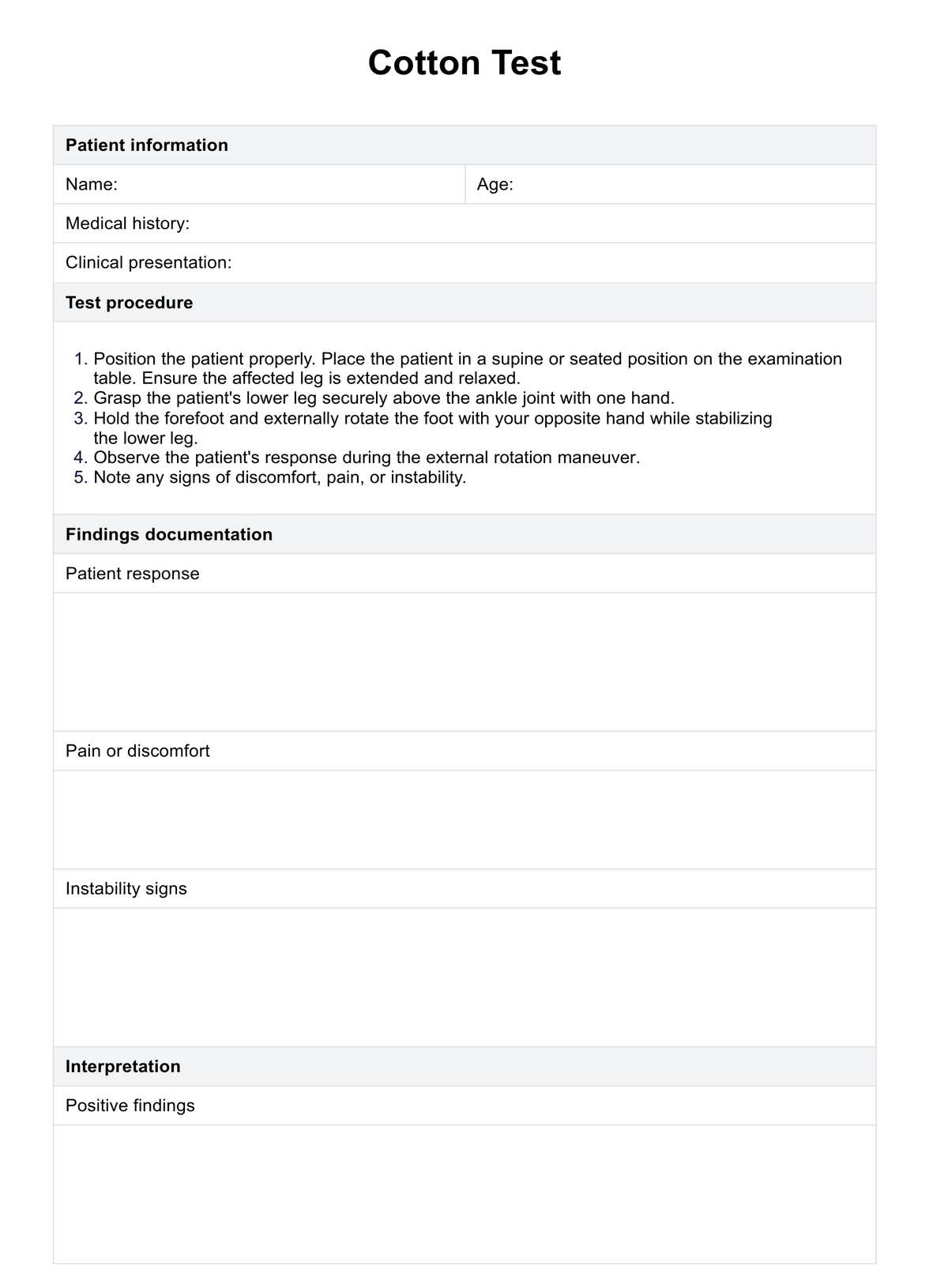The Cotton Test is primarily used to assess syndesmotic ankle injuries by evaluating the stability and integrity of the syndesmotic ligaments. It helps healthcare professionals diagnose syndesmotic instability or injury, particularly in suspected ankle syndesmotic sprains or fractures.

Cotton Test
Download Carepatron's free Cotton Test PDF template and get hands-on with cotton testing and examples.
Cotton Test Template
Commonly asked questions
In ear, nose, and throat (ENT) medicine, the Cotton Test is not commonly used. However, if referenced, it could potentially involve assessing vestibular function or hearing sensitivity, depending on the examination context.
The Cotton Test for ankles involves externally rotating the foot while stabilizing the lower leg to stress the syndesmotic ligaments and assess for syndesmotic ankle injuries. It aids in diagnosing syndesmotic instability, helping healthcare professionals determine the appropriate course of treatment for ankle injuries.
EHR and practice management software
Get started for free
*No credit card required
Free
$0/usd
Unlimited clients
Telehealth
1GB of storage
Client portal text
Automated billing and online payments











